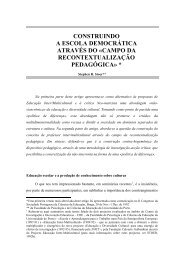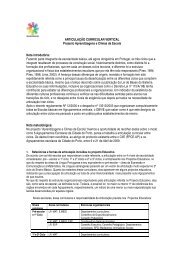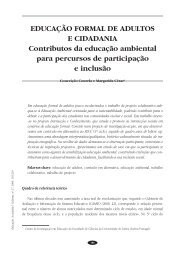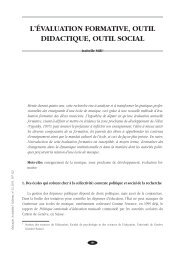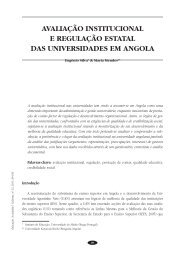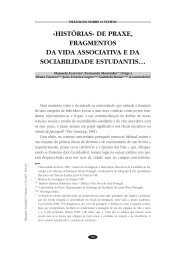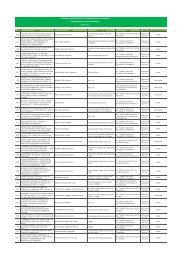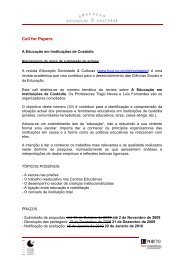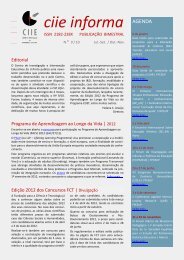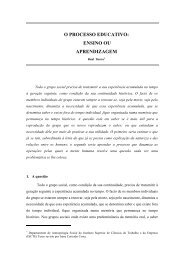REFLECTINGON AN ACADEMIC PRACTICE TOBOOST GENDER ...
REFLECTINGON AN ACADEMIC PRACTICE TOBOOST GENDER ...
REFLECTINGON AN ACADEMIC PRACTICE TOBOOST GENDER ...
You also want an ePaper? Increase the reach of your titles
YUMPU automatically turns print PDFs into web optimized ePapers that Google loves.
Schoolteachers’ for mation and r oles in the transfor mation of heter onor mative valuesFeminisms have been mostly successful in achieving the recognition that gender 1 issocially constructed. It was a difficult task because it had to deal with both cultural/religiousand scientific prejudices related to natural (hetero) sexual order.In fact, most disciplines contribute to justify and maintain genderized social differencesaccording to an alleged natural order: official history and anthropology reconstruct a humanpast where society was organized around sexual opposition without almost any exception;medicine and psychology pontificate that natural element (hormones, body structure, mindconfiguration…) made women and men to diverge in psychical, mental, and emotional capacities;economy and statistics insist that the sexual division of labour was fundamental todevelop a modern society; formal and informal education was entrusted to reproduce thatsame sexist order reinforcing dichotomies and neglecting/pathologizing multiplicities and discordancefrom heteropatriarcal norms (Biglia & Lloret, 2010).The strong critique and pressure of feminist social movement, however, forced the inclusionof less discriminating supranational laws/norms agreements. In that sense already in1979, United Nations ratified the Convention on the Elimination of All Forms of DiscriminationAgainst Women (CEDAW), that «provides the basis for realizing equality between womenand men through ensuring women’s equal access to, and equal opportunities in, political andpublic life (…) as well as education, health and employment» (United Nations, n.d.: 20, 40).Since then, gender mainstreaming policies and actions has been developed and the selfcalled«first world countries» declare their commitment against women discriminations. Nevertheless,following Verloo and Lombardo, we can reflect on the fact that «Gender equality canbe conceptualized as a problem of achieving equality as sameness (…), or of affirming differencefrom the male norm (…), or of transforming all established norms and standards of whatis/should be female and male» (2007: 23). In our opinion, very often it has officially beeninterpreted as achieving equality as sameness and, for that reason, it has been assumed thatequal law and norm were almost enough to overcome discriminations. Instead, we agree withthe third option proposed by the author, believing that equalities can only be achieved bysubverting heteropatriarchal norms to allow multiplicities. «Feminist scholars have produced alarge literature problematizing the unitary categories “woman” and “feminism” (…). Many ofthese critiques highlight the fluidity, situatedness, locality, contingency, and intersectionalitythat are required to theorize and understand women’s experiences» (Rutherford, Capdevilla,1The Real Academia Española (RAE) still does not recognize that kind of use of the word gender; in that sense,they also criticize the use of that word in the Integral Law Against Gender Violence (RAE, 2004).107



